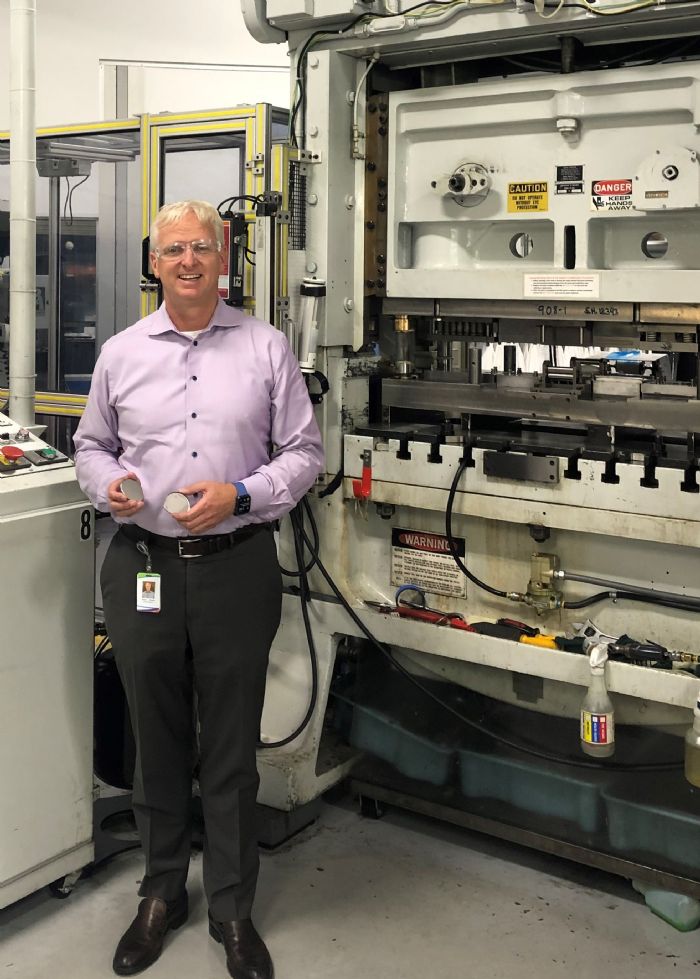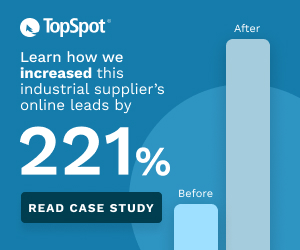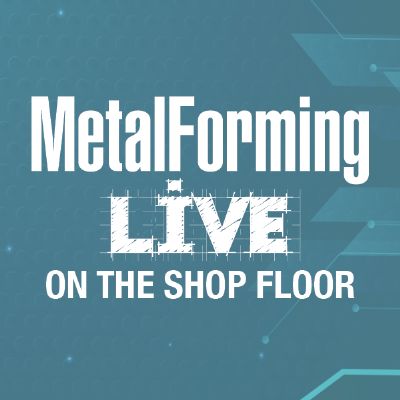
| Welcome to the newest monthly newsletter offering from MetalForming magazine and PMA. We hope you find it useful and interesting; please feel free to share your thoughts with us. |
| |
|
This regular column from MetalForming magazine provides an inside look at the management styles and techniques of metal forming and fabricating company executives. We’ll share some of their philosophies, their daily challenges and how they face them, and offer additional insights. We hope that you find these interviews useful and can take away some ideas to use at your own company.
Want to be interviewed for this column? E-mail editorial director Brad Kuvin. |
| |
|

|
| Perspectives on Business Management with Jason Howey, President and CEO, Okay Industries, Inc. |
New Britain, CT-based Okay Industries engineers and manufactures components and subassemblies for OEMs in the medical, surgical and other precision specialty markets. When we interviewed president and CEO Jason Howey, he was quick to bring up “The Okay Way,” described as “our dedication, values and expectations—the way we do business, the way we treat others and the way we ensure that we exceed your expectations for excellence at every opportunity.”
With three locations in the United States and Costa Rica, and more than
190,000 sq. ft. of medical-component manufacturing space, Okay
Industries counts among its capabilities stamping, machining, tube
cutting (laser) and forming, and automated/robotic assembly.
“At Okay, we hold people accountable not just for their performance related to the technical aspects of their job, but also for their behavior,” Howey says. “The best way to get rid of your best talent is by tolerating those that behave poorly.” |
|
|
| |
|
| Logopress ProgSim: Real Results from Real Tooling |
User-Friendly
and Affordable Software for Incremental Forming Simulation of
Progressive Dies Inside of SOLIDWORKS. Determine formability and
springback status inside Logopress DieDesign software, allowing the
designer to address formability issues before the die is designed.
Deliver dies faster with less mistakes.
Watch Video |
|
|
| |
|

|
| |

|
| The Manufacturing Talent Crisis Will Not Fix Itself. Are You Taking Action? |
This month’s Love Letter from Laurie Harbour shines the spotlight on the labor shortage plaguing manufacturers, as she poses these questions to readers:
“What are you doing to be a more attractive employer? What are your strategies to attract and retain the right employees?”
She then cites the recent PMA Metalforming Insights survey, which
reveals that only about half of all metal forming companies have a
human-resources professional on staff, and of those, only 60 percent
have a seat for this person at the leadership table.
“Although that is better than many other industries,” Harbour says, “it is not good enough to address the talent crisis. If talent is an issue, you need to have the right HR professionals in place, and they need to be directly connected to the top leaders.”
She goes on to offer other ideas and strategies for attracting and
retaining the right employees, starting with conducting a culture
assessment. |
|
|
| |
|
| Welcome to the newest recurring column in the MetalForming Business Edge
enewsletter, focused on safety and compliance issues that require the
consistent attention of metal forming and fabricating company
executives. This time we focus on: |
| |
|
| Avoid Workplace Hazards with Slip, Trip and Fall Controls |
Fresh from the Risk Management Corner
blog from Federated Insurance is an article emphasizing the reasons why
manufacturers should not lose sight of the need to protect their
employees from slips, trips and falls.
“Each year, thousands of workers are injured or disabled as a result of slips, trips and falls,” the article notes, “which may occur anytime, anywhere or to anyone…. Unfortunately, they are not uncommon occurrences in the workplace—about 20 to 25 percent of all occupational-injury accidents involve slips, trips and falls.”
The article lists several leading—and avoidable—causes of slips, trips and falls, including inappropriate footwear, obstacles in walkways and unsafe ladder use. Then it describes how the use of engineering controls can help manufacturers evaluate their physical environment and rectify any hazards. |
| |
|
| Content Strategy Drives Lead Growth & New Business Opportunities |
| Since 2003, TopSpot has specialized in digital marketing and website development for industrial manufacturers, fabricators, CNC shops, OEMs and more. Learn more about how TopSpot’s data-driven content development increased the industrial website's online leads by 221% within the first year. |
|
|
| |
|

|
| The Ted Lasso Approach to Leadership |
If you haven’t seen Ted Lasso, the Apple TV+ comedy show starring Jason Sudeikis as an American college-football coach that takes over a UK Premier League soccer team, binge-watch it ASAP. Entertaining for sure, but inspirational as well, and full of life lessons—including lessons that hit home for any company leader.
Such is the theme of this post from Ben Decker, Decker Communications, and I completely concur with Decker’s take, having recently binge-watched season one of Ted Lasso (after a solid recommendation from a coworker), and now eagerly await watching season two, which launched at the end of July. Decker references a Wall Street Journal article on how NBA coaches are applying lessons learned from Ted Lasso to their own coaching, and details two of them here: Empathy and Speak Human. He then goes on to describe the Decker leadership methodology, which follows the acronym SHARP—stories, humor, analogies, references and quotes, and pictures and visuals. |
|
|
| |
|

|
| Supply-Chain Implications of Biden’s First 100 Days |
“The Biden administration has placed great focus on the automotive industry during the president’s first 100 days in office, promoting the adoption of electric vehicles (EVs) and other infrastructure necessary for mass adoption of EVs such as charging stations.” So notes this article from the consultants at Conway Mackenzie, outlining numerous legal and regulatory policies promising to create opportunities for North America related to electrification of vehicles, mass transportation and related infrastructure needs.
“Biden’s proposed $1.2-trillion infrastructure spending bill contains incentives for companies to speed up research and development, install greater capacity to produce vehicles and batteries, and boost worker training,” the article continues. The 19-page article details automotive supply-chain implications, and specifies labor-related challenges and looming supply disruptions, while also presenting opportunities for suppliers. |
|
|
| |
|
|
| |
|
|
 |
|

 Software
Software















 Event
Event